

“As was her custom before every performance, she meticulously checked every corner of the stage. But what Rocío Hernández did not foresee was the ellipsoidal reflector spotlight that, unhung from the grid, fell violently over her head. No one said anything, but everyone was visibly amazed by what they saw: Rocío's head had been replaced by a spotlight perfectly fitted onto the designer's neck, pointing and lighting up their faces.
She became a literal bearer of light whom, over time and a series of difficulties notwithstanding, people came to understand. She communicated through a strange and striking language by opening and closing the iris of her spotlight, allowing her to travel the world creating new spaces using only her head movements.
But the spotlight was not without its flaws. One autumn day, in the heavy rain, sparks started flying out all over the bulb, and it exploded. Rocío collapsed, separated from her lamp-head, and no matter how hard her friends searched for spare parts for the bulb, they could not find any. Thus, they were unable to revive her.”
“Como siempre, antes de cada función, revisó meticulosamente cada rincón del escenario. Sin embargo, Rocío Hernández no vio venir ese foco elipsoidal que, descolgado de la parrilla, fue a parar violentamente sobre su cabeza. Nadie dijo nada, pero todos quedaron visiblemente asombrados por lo que vieron allí: la cabeza de Rocío había sido sustituida por el foco, encajado perfectamente en el cuello de la diseñadora, que ahora les apuntaba e iluminaba sus rostros.
Se convirtió en una portadora de la luz bastante literal a la que, con el tiempo y pese a las dificultades, la gente llegó a entender. Se comunicaba a través de un extraño y llamativo lenguaje abriendo y cerrando el iris del foco, lo que le permitió viajar por el mundo creando nuevos espacios usando solo los movimientos de su cabeza.
Pero el foco no estuvo exento de desperfectos. Un día de otoño, bajo una intensa lluvia, la ampolleta comenzó a echar chispas por doquier y explotó. Rocío se desplomó, separada de su cabeza-foco y por más que sus amigos buscaron repuestos para la ampolleta, no encontraron ninguna. De este modo, no pudieron reanimarla.”
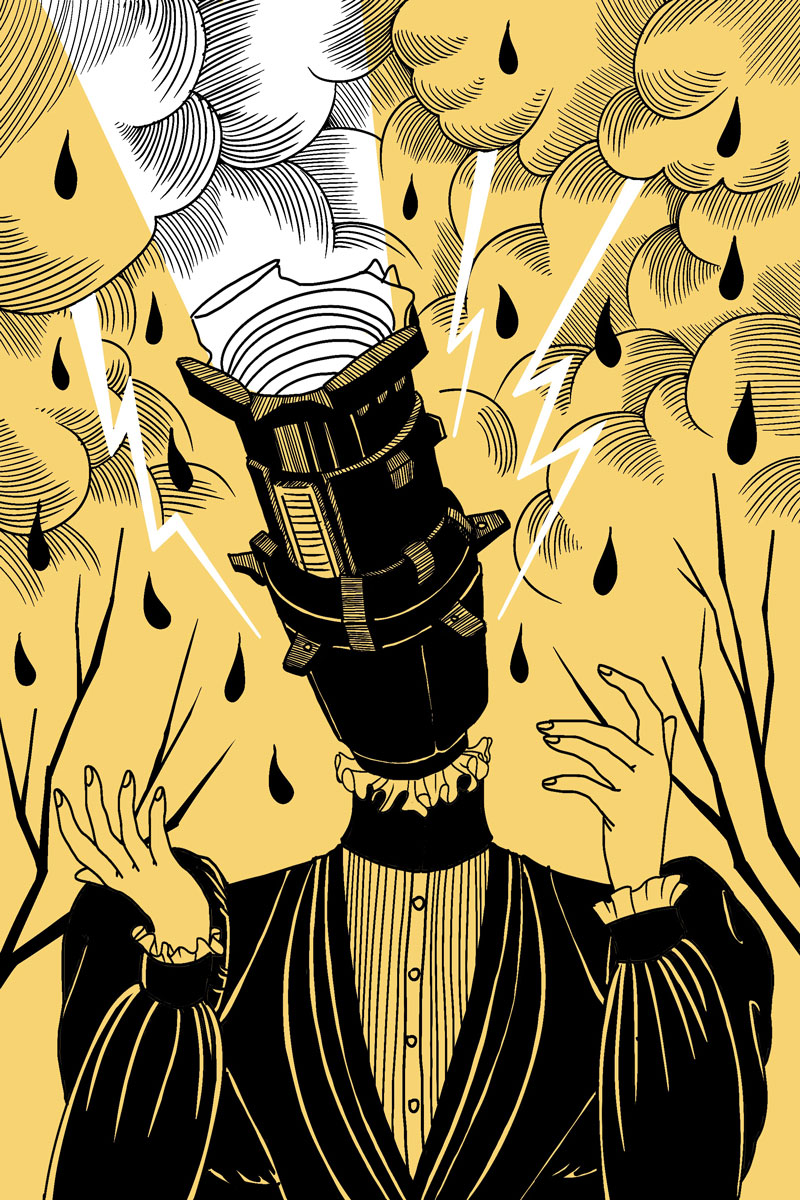
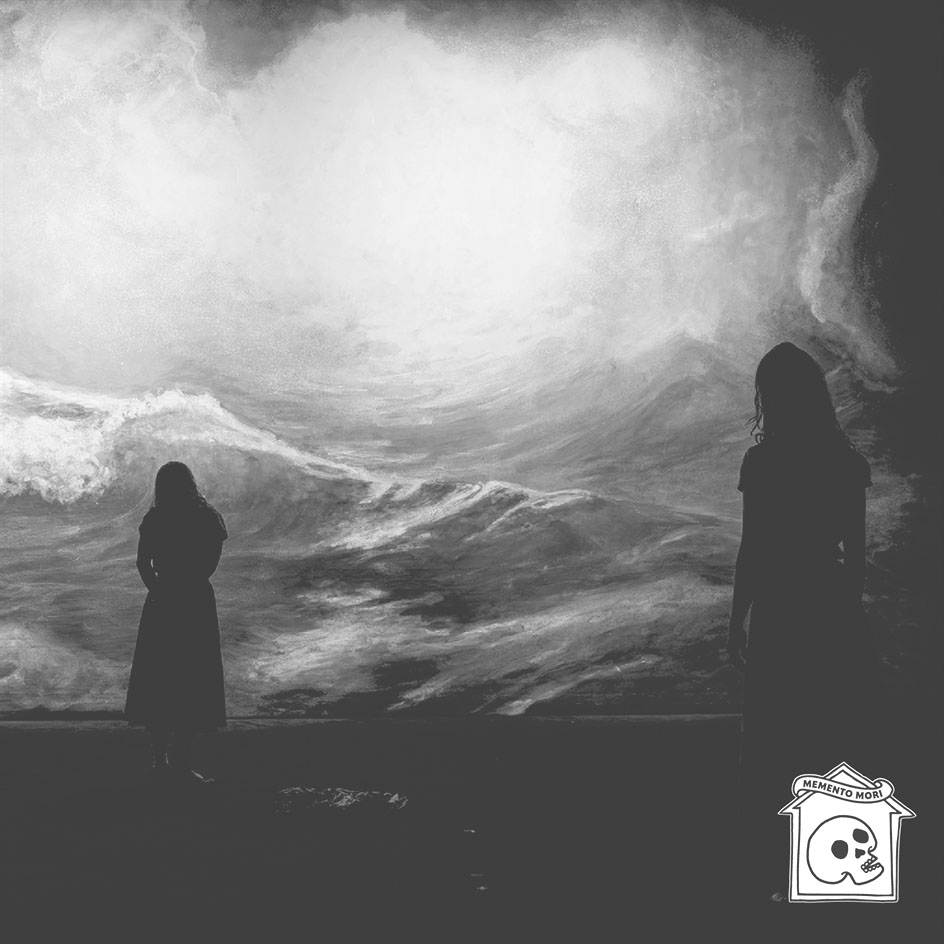
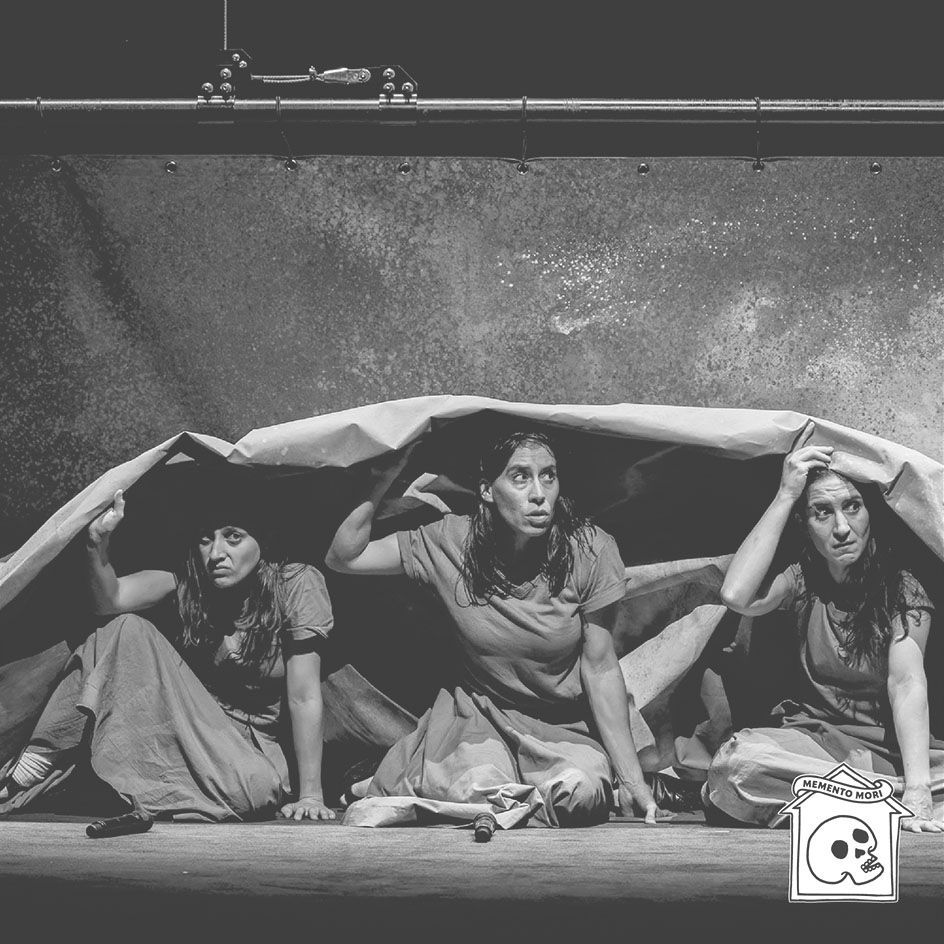
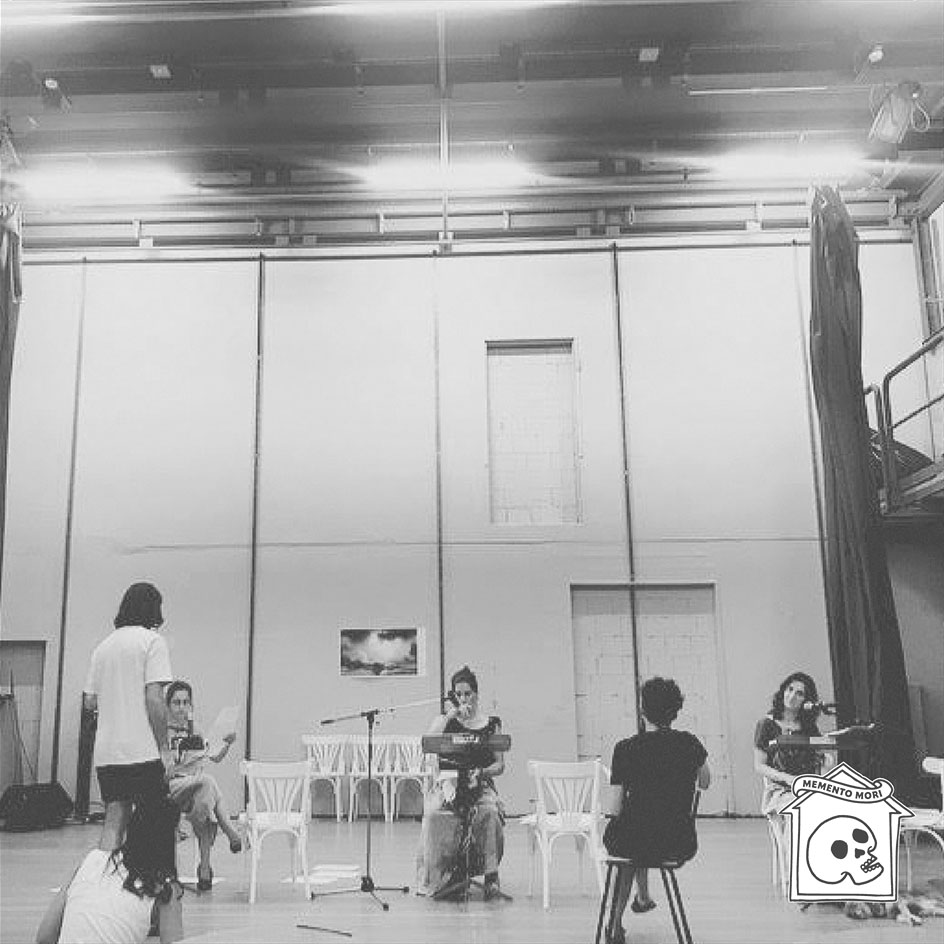
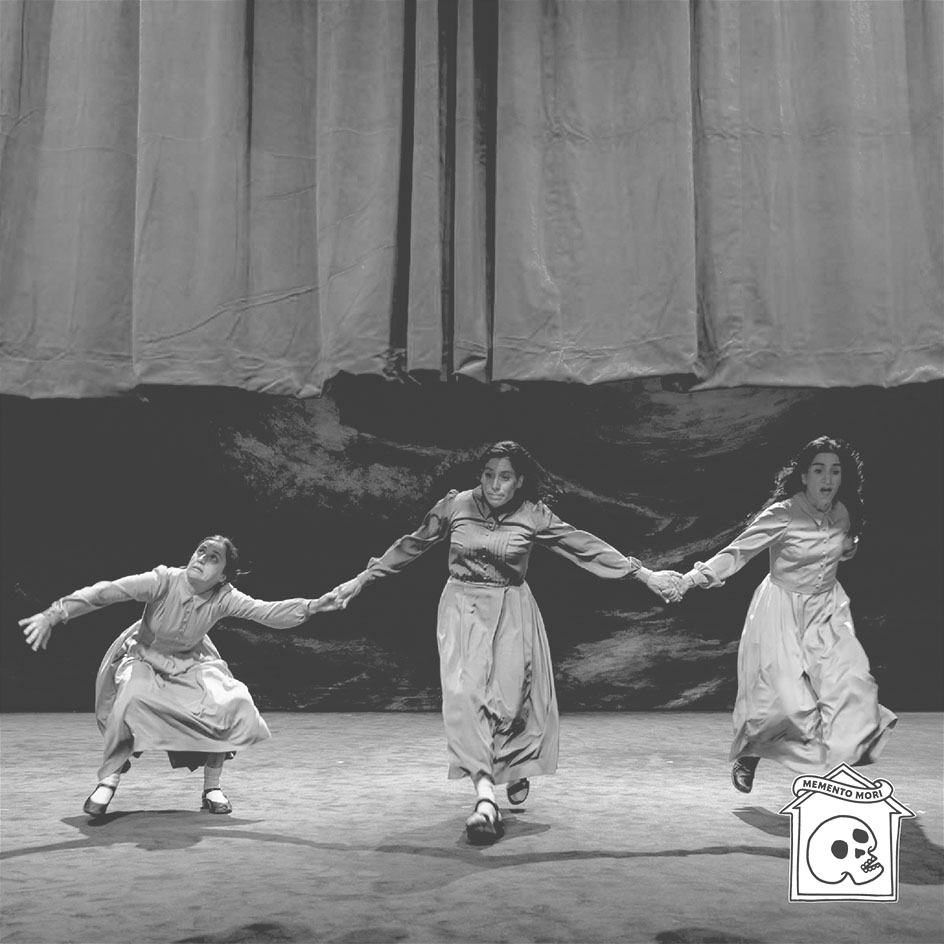
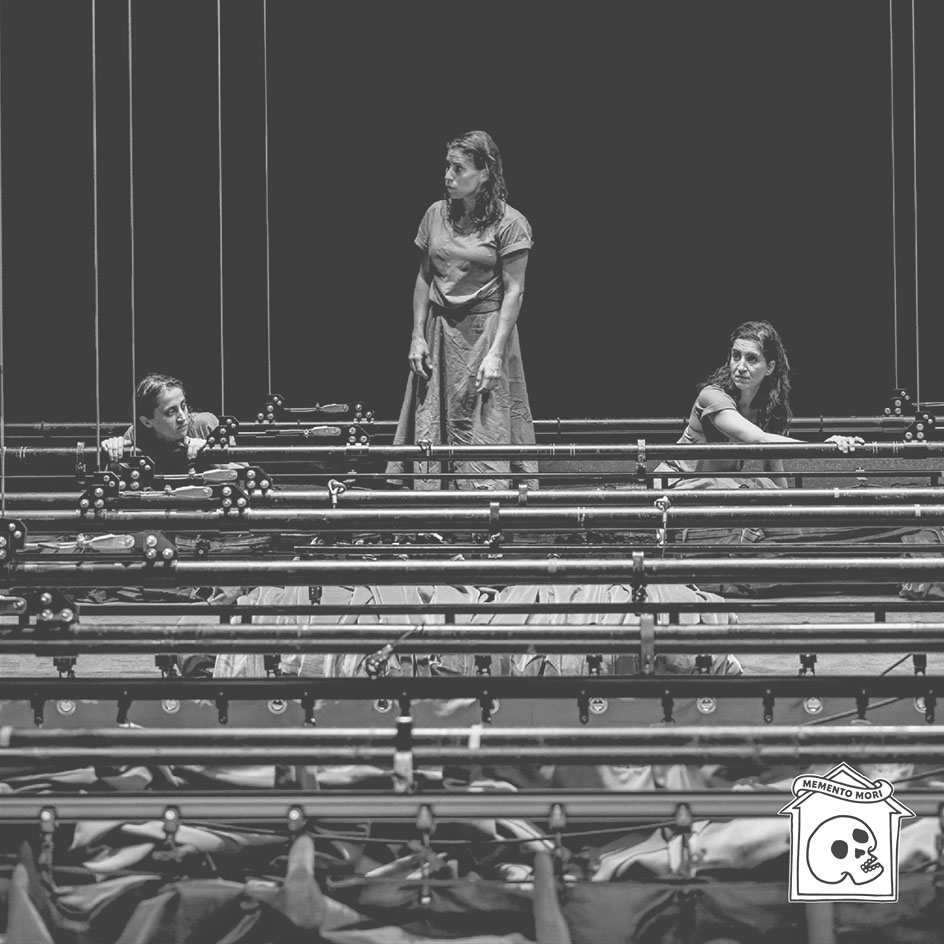

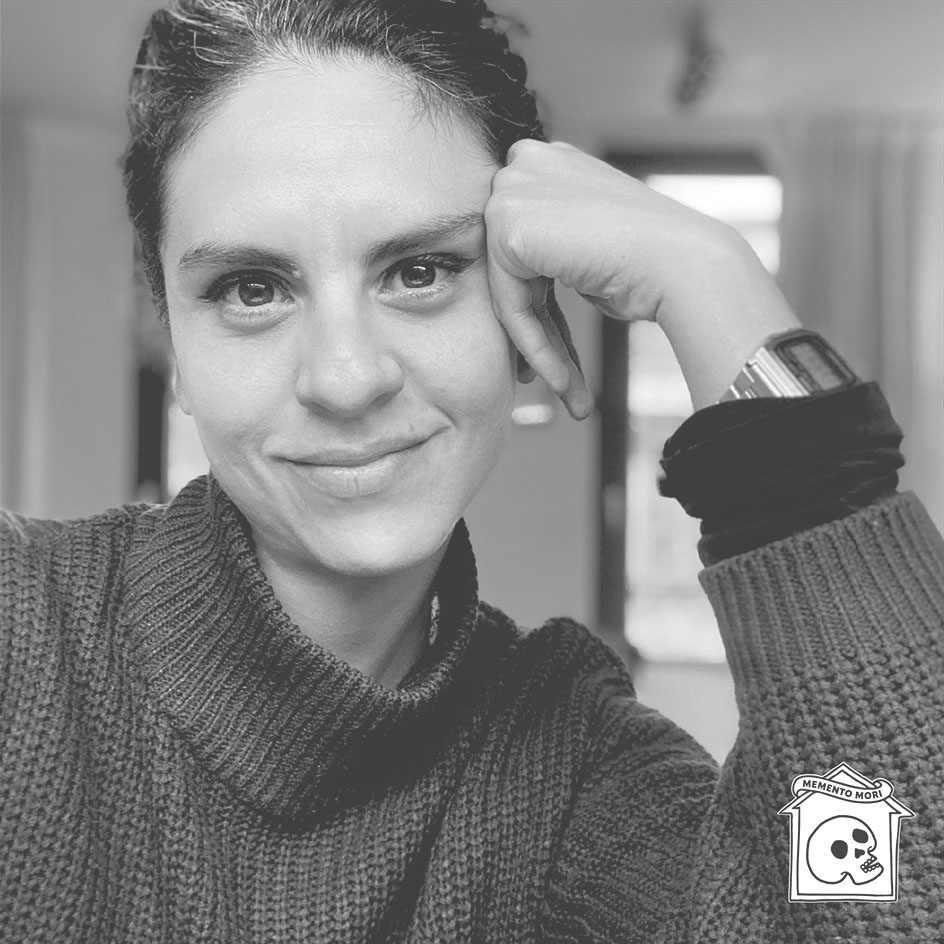
Rocío Hernández was a prominent theater designer trained at the University of Chile. She developed her extensive creative career in lighting design, scenography and costume design for the theater.
She participated in several acclaimed plays, including: "Hilda Peña", "Un minuto feliz" and "Estado Vegetal". Working alongside several companies and directors, she participated in various national and international festivals and tours, both in Chile and abroad. She also collaborated with creative crews in film productions and other live events, while always maintaining her theatrical perspective and training.
Rocío had always been a fan of Visual Arts and found theatrical design an exciting place to develop her skills. From a young age, she never imagined herself working somewhere conventional, so work as a designer was ideal since it offers a space where creativity and connection to people can come together.
She participated as one of the curators of the Chilean Pavilion "Monstruos Menores" during the last Quadrennial of Design and Scenic Space in Prague 2019, where she received two accolades: the Youth Audience Award and the Collaborative Accomplishment in Exhibition Award.
Her creative process was always quite open. Each project for her meant a new portal to enter a different world. "Each play offers a possibility to create", Rocío used to say during her lifetime.
Rocío Hernández fue una destacada diseñadora teatral formada en la Universidad de Chile. Desarrolló su amplia trayectoria creativa en torno al diseño de iluminación, escenografía y vestuario en teatro.
Participó en reconocidas obras teatrales, entre ellas: “Hilda Peña", "Un minuto feliz” y “Estado Vegetal”. Trabajó junto a varias compañías y directores, participando en diversos festivales nacionales e internacionales y giras, tanto en Chile y el extranjero. Por otro lado, también formó parte de equipos creativos en cine y otros eventos en vivo, siempre desde su punto de vista y formación teatral.
Rocío fue siempre una fanática de las Artes Plásticas y encontró en el diseño teatral un lugar apasionante para desarrollar sus capacidades. Desde pequeña nunca se imaginó trabajando en un lugar convencional, por lo que su labor como diseñadora se convirtió en un espacio ideal de trabajo, al ser una instancia donde se conjugan la creatividad y la conexión con las personas.
Fue una de las curadoras del Pabellón de Chile “Monstruos Menores” en la última Cuadrienal de Diseño y Espacio Escénico de Praga 2019, obteniendo dos galardones: el Premio de la Audiencia Juvenil y el Premio realización colaborativa en exhibición.
Su proceso creativo siempre fue bastante abierto. Para ella, cada proyecto significaba un portal nuevo para poder entrar a un mundo distinto. “Hay una posibilidad que entrega cada obra como un espacio de creación”, mencionaba Rocío en vida.